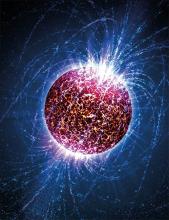
Description
With the direct detection of Gravitational Waves (GWs) in Advanced LIGO's first and second observing runs, the era of Gravitational Wave Astronomy is upon us. Gravitational waves, distortions of the geometry and space and time predicted by Einstein's General Theory of Relativity, provide a new window on the universe, allowing us to supplement the range of information available from different parts of the electromagnetic spectrum and from cosmic ray and neutrino observations. The GW signals observed so far have been short-lived, and from the final stages of black holes and neutron stats orbiting into one another. This project is aimed at detection of long-lived GWs from rapidly spinning neutron stars, extremely dense objects more massive than the Sun and the size of a city, spinning tens to hundreds of times every second. The main targets for this search are neutron stars in binary orbits with lower-mass stars. The neutron stars attract material from their companions, which powers their rotation and emits X-rays, allowing a multimessenger analysis.
This project will involve faculty and students of the Rochester Institute of Technology, who will broaden the multimessenger effort to search for GWs from low-mass X-ray binaries (LMXBs) in several ways: 1) ensuring the search for Scorpius X-1, the brightest LMXB, is as sensitive as possible with algorithmic improvements and mock data validation, 2) expanding the search to other LMXBs, and 3) implementing a hierarchical followup to existing searches for unknown neutron stars in binary systems. The group will also enhance the sensitivity of a variety of continuous-wave searches by incorporating an improved detection statistic into the LSC algorithm library. The search for the Sco X-1, as well as accreting binaries J1751-305, Cygnus X-3, and 4U 1636-536, is considered a highest priority by the LIGO scientific collaboration, and this award will be instrumental in maximizing its success.
This award reflects NSF's statutory mission and has been deemed worthy of support through evaluation using the Foundation's intellectual merit and broader impacts review criteria.